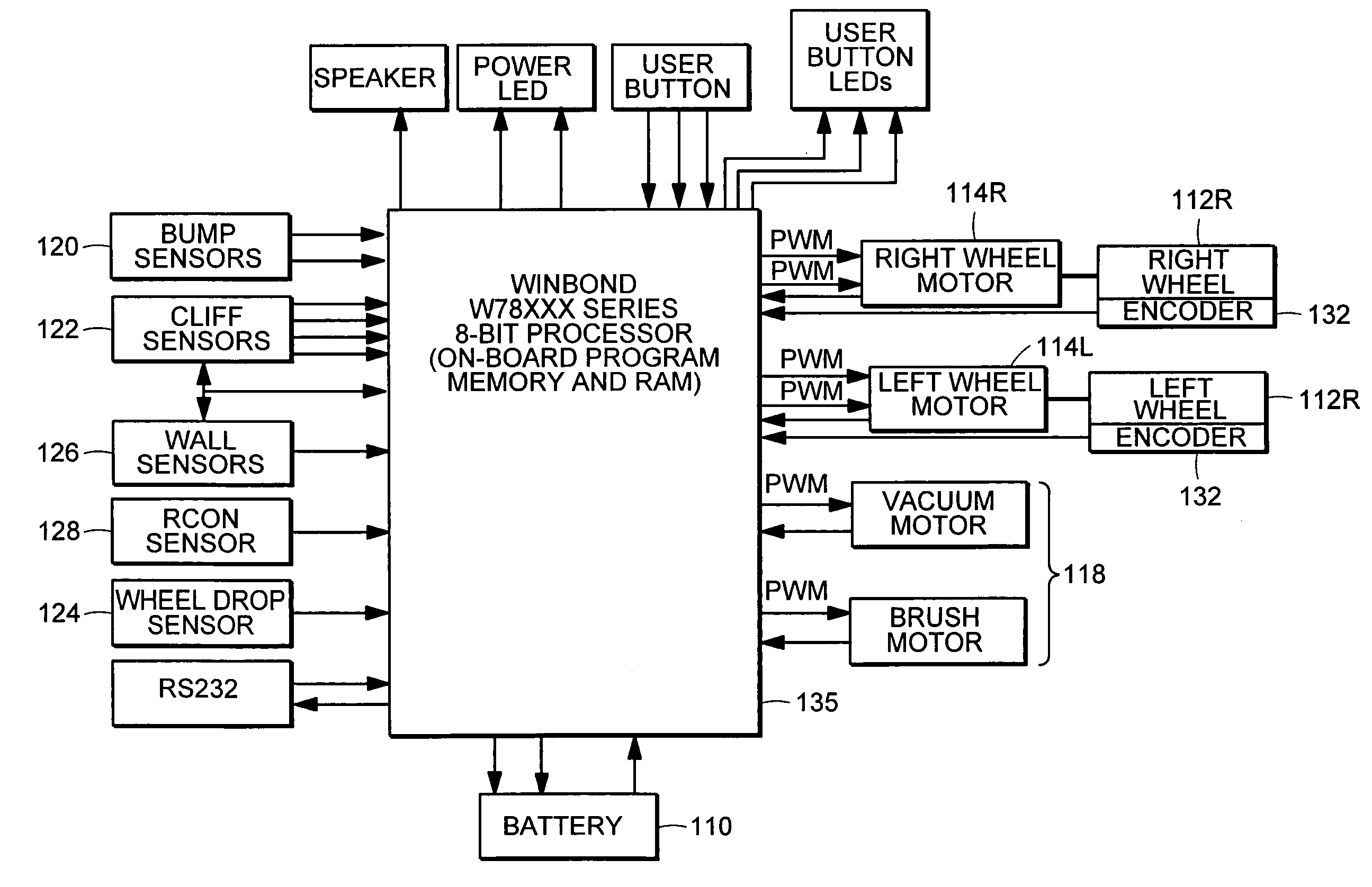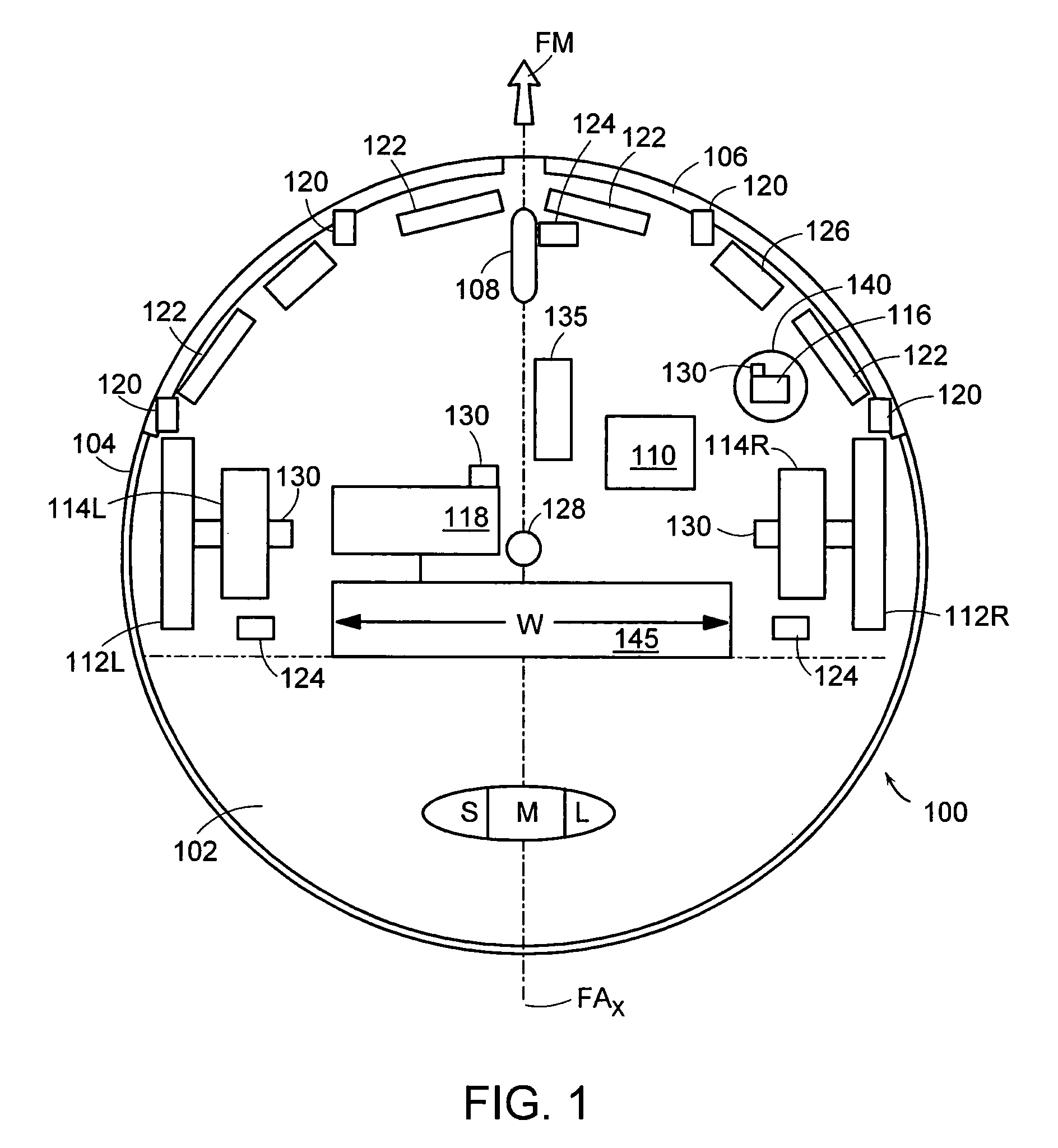Navigational control system for a robotic device
a robotic device and control system technology, applied in the field of mobile robotic devices, can solve the problems of inability to use global positioning methods, inability to use deterministic cleaning robotic devices, and high cost of robotic devices, so as to improve the cleaning efficiency of robotic devices
- Summary
- Abstract
- Description
- Claims
- Application Information
AI Technical Summary
Benefits of technology
Problems solved by technology
Method used
Image
Examples
Embodiment Construction
[0030]Referring now to the drawings wherein like reference numerals identify corresponding or similar elements throughout the several views, FIG. 1 is a top-view schematic of an exemplary preferred embodiment of a robotic device 100 having particular utility in combination with a navigational control system 10 according to the present invention. FIG. 2 is a block diagram of the hardware of the robot device 100 of FIG. 1.
[0031]The hardware and behavioral modes (coverage behaviors for cleaning operations; escape behaviors for transitory movement patterns; and safety behaviors for emergency conditions) of the robotic device 100, which is manufactured, distributed, and / or marketed by the iRobot Corporation of Burlington, Mass. under the ROOMBA trademark, are briefly described in the following paragraphs to facilitate a more complete understanding of the navigational control system 10 of the present invention. Further details regarding the hardware and behavioral modes of the robotic dev...
PUM
 Login to View More
Login to View More Abstract
Description
Claims
Application Information
 Login to View More
Login to View More - R&D
- Intellectual Property
- Life Sciences
- Materials
- Tech Scout
- Unparalleled Data Quality
- Higher Quality Content
- 60% Fewer Hallucinations
Browse by: Latest US Patents, China's latest patents, Technical Efficacy Thesaurus, Application Domain, Technology Topic, Popular Technical Reports.
© 2025 PatSnap. All rights reserved.Legal|Privacy policy|Modern Slavery Act Transparency Statement|Sitemap|About US| Contact US: help@patsnap.com



